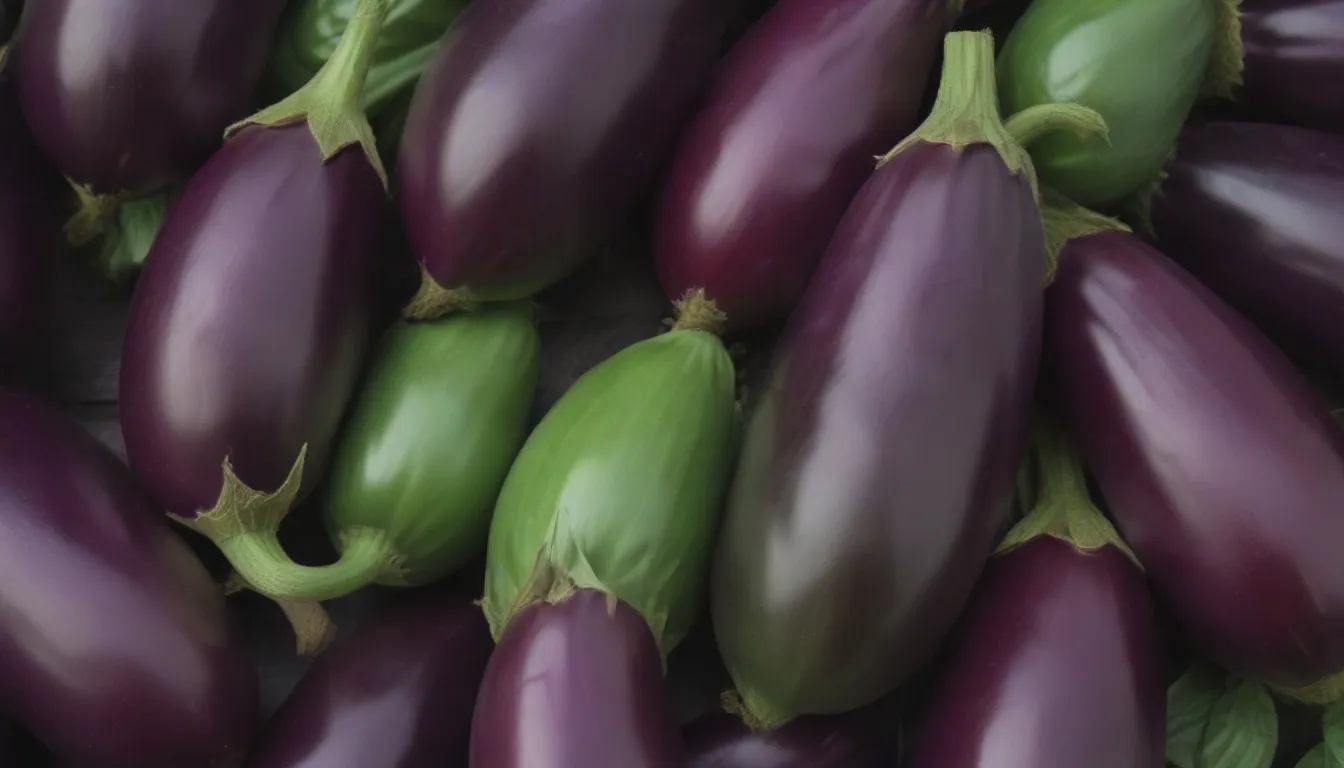The Complete Guide to Growing Eggplant: Tips, Tricks, and More!

If you’re looking to add a versatile and delicious vegetable to your garden, look no further than eggplant. Known for its vibrant colors and unique shape, eggplants are not only visually appealing but also easy to grow. In this comprehensive guide, we will cover everything you need to know about growing eggplant successfully in your own garden.
Why Grow Eggplant?
Eggplant, scientifically known as Solanum melongena, is a fast-growing warm-season vegetable that can add a pop of color to your garden. With beautiful flowers that give way to deep purple eggplants in various sizes and shapes, this versatile vegetable is a must-have for any garden enthusiast. Plus, some eggplant varieties are so stunning they can double as ornamental plants.
How to Plant Eggplant
When to Plant
To get started with growing eggplant, you’ll want to either start seeds indoors eight to nine weeks before your area’s last projected spring frost date or transplant nursery plants into your garden once the danger of frost has passed.
Selecting a Planting Site
Choose a sunny spot with well-draining soil for your eggplant. Consider using a raised garden bed or a container, as they warm up faster than in-ground planting. Additionally, avoid planting eggplant where other nightshade family plants have been grown recently to prevent diseases.
Spacing, Depth, and Support
Space your eggplant plants at least two feet apart in rows that are at least three feet apart. When planting seeds, cover them with about 1/4 inch of soil, while nursery plants should be planted at the same depth as they were in their containers. Adding stakes early on can help support the plants as they grow.
Eggplant Care
Light
Eggplants thrive in full sun, so be sure they get at least six hours of direct sunlight each day.
Soil
Ensure your eggplants are planted in organically rich, loamy soil with good drainage. Eggplants can tolerate soil pH levels ranging from slightly acidic to slightly alkaline.
Water
Keep the soil consistently moist by watering regularly. Mulching with straw or wood chips can help retain moisture and promote even growth. Inconsistent watering can lead to misshapen eggplants, so be mindful of maintaining consistent moisture levels.
Temperature and Humidity
Eggplants prefer temperatures between 70 and 90 degrees Fahrenheit during the day and around 60 degrees Fahrenheit at night. Moderate humidity levels are ideal, as high humidity can affect pollination.
Fertilizer
When planting seedlings, incorporate compost or a balanced fertilizer following label instructions. Feed your eggplants again when the first fruits appear, and repeat every few weeks to ensure healthy growth.
Pollination
Eggplants are self-pollinating, but pollinating insects can also assist in the process. Bees and other pollinators are beneficial for maximizing fruit production.
Types of Eggplant
There are several varieties of eggplant to choose from, each with its unique characteristics:
- ‘Fairy Tale’
- ‘Hansel’
- ‘Gretel’
- ‘Rosa Bianca’
- ‘Little Fingers’
Eggplant vs. Zucchini
While eggplant and zucchini share a similar shape, they differ in color and taste. Eggplants are typically purple and take on the flavors of the dishes they’re cooked with, whereas zucchinis are green and have a more distinct taste in recipes.
Harvesting Eggplant
Harvest your eggplants in mid to late summer once they reach maturity. Young eggplants are often more tender and flavorful, so keep an eye on your plants for ripe fruit. Eggplants should have a glossy, unwrinkled skin and a slight give when ripe. To harvest, cut the fruit with a knife, leaving about an inch of stem attached.
How to Grow Eggplant in Pots
If you’re short on space or soil quality, growing eggplant in containers is a viable option. Choose a container that is at least five gallons in size and has adequate drainage. Dark-colored pots can help maintain the warm soil conditions that eggplants prefer.
Pruning
While eggplants typically don’t require pruning as annual plants, a little pruning on mature plants in perennial regions can help revitalize them. Remove excess stems after the plant has produced most of its fruits to encourage new growth for the next season.
Propagating Eggplant
If you have a mature eggplant plant, you can propagate it through cuttings at the end of the growing season. This cost-effective method accelerates plant growth and allows for new plants the following spring.
How to Grow Eggplant From Seed
Start eggplant seeds indoors in small containers filled with seed-starting mix, or sow them directly in warm garden soil. Keep the soil moist and warm, and ensure adequate light for germination. Transfer seedlings to a bright window once they sprout.
Potting and Repotting Eggplant
Use a quality potting mix when potting eggplant seedlings and consider repotting them into larger containers once they reach four inches in height. Provide support, such as stakes, as the plants grow to prevent tipping.
Overwintering
In colder climates, most gardeners treat eggplants as annuals and discard them after the growing season. However, if grown in perennial zones, protect eggplants from frost by covering them with row covers or bringing containers indoors during cold spells.
Common Pests and Plant Diseases
Eggplants are susceptible to pests and diseases common in the nightshade family. Look out for flea beetles, cutworms, tomato hornworms, and powdery mildew. Opt for pest-resistant varieties and maintain optimal growing conditions for healthy plants.
In conclusion, growing eggplant can be a rewarding experience for gardeners of all skill levels. By following the tips and guidelines outlined in this comprehensive guide, you can successfully cultivate flavorful eggplants in your own garden. Whether you’re a seasoned gardener or a beginner, adding eggplant to your garden repertoire is a fantastic way to embrace the beauty and versatility of this unique vegetable. Happy gardening!





